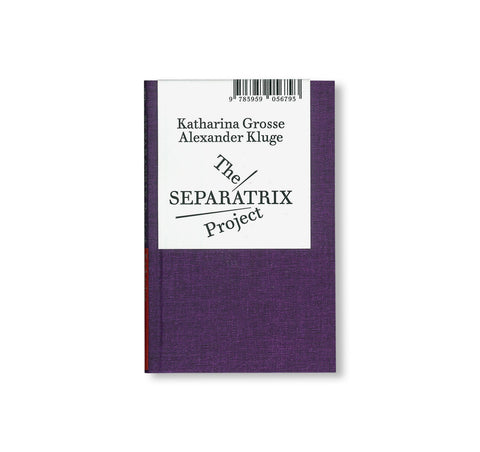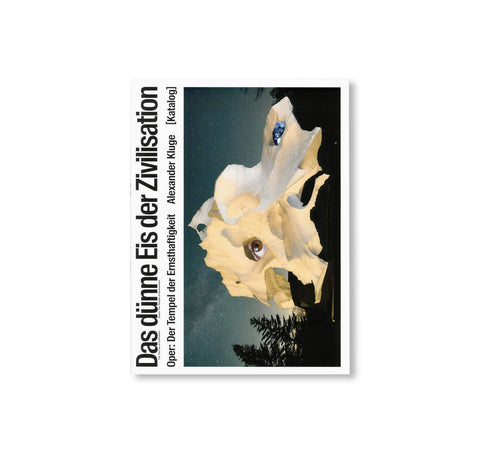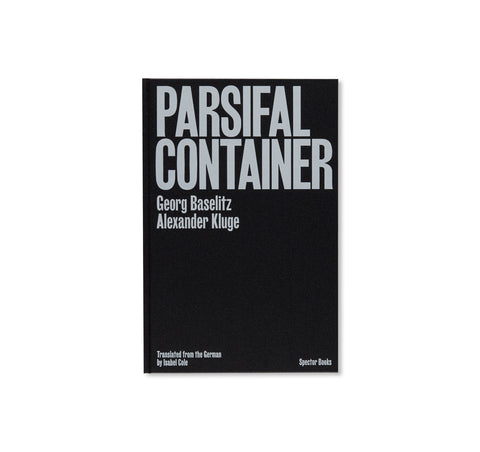THE DRAGONFLY’S EYE - MY VIRTUAL CAMERA (AI) by Alexander Kluge [ENGLISH EDITION]
ドイツ人作家、哲学者、映画監督であるアレクサンダー・クルーゲ(Alexander Kluge)の作品集。入力されたテキストをもとに写真のようなリアルな独自の画像を生成する「訓練済のAIモデル(Diffusion Model)」を搭載した画像生成AI「Stable Diffusion」。本書で作者は、そのモデルの協調的な能力を試している。映画製作を行う身として作者は長年にわたり、人間とは異なる見方を持つカメラを扱いながら、カメラがものを見る方法について考え、経験を積んできた。ゆえに、AIが生成する多様な画像には特に関心を寄せている。
本書に収録された作者自身によるエッセイでは、このAIが、偶然の要素やエラーによって仮定の形を作り出し、位置づけや定義づけをすることが難しいオープンな画像を生み出すという、新しいタイプの画像の特異性を考察している。作者は、「ヴァーチャル・カメラ」の使用に関するルールを確立し、いかにしてAIを扱うべきか、その議論に貢献している。 ギリシャ神話に登場する老夫婦ピレモンとバウキスを通じた東ドイツにおける幻の妊娠の事例から、飛行機墜落で死亡したロシア支援の傭兵組織「ワグネル」の代表エフゲニー・プリゴジンに至るまで、画像とテキストを組み合わせた一連のストーリーの中で、「ヴァーチャル・カメラ」がいかにしてストーリーを語り、新しい方法で想像できる空間を開拓するのか検証する一冊である。
英語版。ドイツ語版はこちら。
In The Dragonfly’s Eye, 92-year-old author and filmmaker Alexander Kluge tests out the cooperative capacities of the Stable Diffusion model, which uses AI to process images. As a film-maker, he has many years of experience in dealing with the camera and its ways of seeing, which are unlike how a person sees. As a result, he is particularly curious about the different images that AI can generate. Kluge’s essay in the book reflects on the idiosyncrasies of these new types of images, in which chance factors and errors create subjunctive forms, resulting in open images that are hard to place. Kluge establishes rules for using the “virtual camera” and thus contributes to a debate on how AI should be handled. In a series of stories combining images and text—ranging from cases of phantom pregnancy in East Germany via Philemon and Baucis to the mercenary Yevgeny Prigozhin—he examines how the “virtual camera” opens up a space in which stories can be told and imagined in a new way.
![THE DRAGONFLY’S EYE - MY VIRTUAL CAMERA (AI) by Alexander Kluge [ENGLISH EDITION]](http://twelve-books.com/cdn/shop/files/0_f2b8e46d-e993-4781-be80-5a6d6b2db090.png?v=1742536472)
![THE DRAGONFLY’S EYE - MY VIRTUAL CAMERA (AI) by Alexander Kluge [ENGLISH EDITION]](http://twelve-books.com/cdn/shop/files/1_f3c3c625-0ba2-48ac-a47b-5af117dd2766.png?v=1742536472)
![THE DRAGONFLY’S EYE - MY VIRTUAL CAMERA (AI) by Alexander Kluge [ENGLISH EDITION]](http://twelve-books.com/cdn/shop/files/2_fbda535e-1a96-4c41-be79-52faae253777.png?v=1742536472)
![THE DRAGONFLY’S EYE - MY VIRTUAL CAMERA (AI) by Alexander Kluge [ENGLISH EDITION]](http://twelve-books.com/cdn/shop/files/3_5e749f5b-f4ff-4015-b9ee-9acb43e06d5f.png?v=1742536472)
![THE DRAGONFLY’S EYE - MY VIRTUAL CAMERA (AI) by Alexander Kluge [ENGLISH EDITION]](http://twelve-books.com/cdn/shop/files/4_fc48a51c-925a-4951-935d-5daf2f9edcc3.png?v=1742536472)
![THE DRAGONFLY’S EYE - MY VIRTUAL CAMERA (AI) by Alexander Kluge [ENGLISH EDITION]](http://twelve-books.com/cdn/shop/files/5_51875f4b-a328-4114-82eb-bcd576650119.png?v=1742536472)
![THE DRAGONFLY’S EYE - MY VIRTUAL CAMERA (AI) by Alexander Kluge [ENGLISH EDITION]](http://twelve-books.com/cdn/shop/files/6_e4cb4785-4f5d-4ff4-b069-d263aa614385.png?v=1742536472)
![THE DRAGONFLY’S EYE - MY VIRTUAL CAMERA (AI) by Alexander Kluge [ENGLISH EDITION]](http://twelve-books.com/cdn/shop/files/7_86c8e7fe-7784-4c29-aafd-a4f67925cc46.png?v=1742536472)
![THE DRAGONFLY’S EYE - MY VIRTUAL CAMERA (AI) by Alexander Kluge [ENGLISH EDITION]](http://twelve-books.com/cdn/shop/files/8_bdbcbb4a-4ca1-41c0-a99c-f72e86d8a95b.png?v=1742536472)
![THE DRAGONFLY’S EYE - MY VIRTUAL CAMERA (AI) by Alexander Kluge [ENGLISH EDITION]](http://twelve-books.com/cdn/shop/files/9_29f051d3-29c8-4902-b15d-0135f3416f90.png?v=1742536472)
![THE DRAGONFLY’S EYE - MY VIRTUAL CAMERA (AI) by Alexander Kluge [ENGLISH EDITION]](http://twelve-books.com/cdn/shop/files/10_e33df861-de69-46b3-905d-75353b228871.png?v=1742536472)
![THE DRAGONFLY’S EYE - MY VIRTUAL CAMERA (AI) by Alexander Kluge [ENGLISH EDITION]](http://twelve-books.com/cdn/shop/files/11_f29b386a-1426-479d-9468-267a447c5042.png?v=1742536472)
![THE DRAGONFLY’S EYE - MY VIRTUAL CAMERA (AI) by Alexander Kluge [ENGLISH EDITION]](http://twelve-books.com/cdn/shop/files/12_73f6793c-bd75-42a3-bf6f-587bb3136588.png?v=1742536473)
![THE DRAGONFLY’S EYE - MY VIRTUAL CAMERA (AI) by Alexander Kluge [ENGLISH EDITION]](http://twelve-books.com/cdn/shop/files/13_258b05fb-357e-4185-a820-1baf40004a53.png?v=1742536472)
![THE DRAGONFLY’S EYE - MY VIRTUAL CAMERA (AI) by Alexander Kluge [ENGLISH EDITION]](http://twelve-books.com/cdn/shop/files/14_d518eaf1-796b-4f43-bc0c-d3809b1d434b.png?v=1742536472)
![THE DRAGONFLY’S EYE - MY VIRTUAL CAMERA (AI) by Alexander Kluge [ENGLISH EDITION]](http://twelve-books.com/cdn/shop/files/15_38822355-408b-4949-85f6-3b1fb96a3ff1.png?v=1742536472)
![THE DRAGONFLY’S EYE - MY VIRTUAL CAMERA (AI) by Alexander Kluge [ENGLISH EDITION]](http://twelve-books.com/cdn/shop/files/16_d6f2c896-1d88-4e2b-83ea-593a2d9967fd.png?v=1742536472)




![DER KONJUNKTIV DER BILDER: MEINE VIRTUELLE KAMERA (K.I.) by Alexander Kluge [GERMAN EDITION]](http://twelve-books.com/cdn/shop/files/00_76929899-2a6e-44ee-832a-7dd721ae1d2a_large.jpg?v=1745285325)